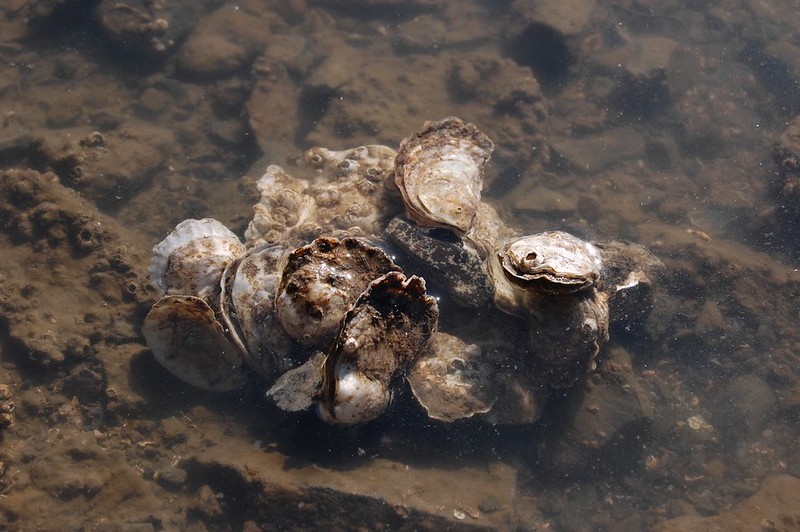Excerpt:
The Pacific coast’s only native oyster is making a comeback, but it still needs a little help from its friends.
Most people, even those who know a thing or two about oysters and may perhaps enjoy eating them, have no idea that the sweet and buttery bivalves they are slurping down in San Francisco or Vancouver are not the native species of the West Coast but Japanese imports. It’s an easy mistake to make, considering that Japanese oysters (Crassostrea gigas) are commonly referred to as Pacific oysters—as in western Pacific—though they have been commercially cultivated in North American waters for nearly a century.
There may be no intentional deception at work, but if you’re anything like me, you must be disappointed to discover another hitch in your quest to do right by the ocean: eating locally caught, native seafood, preferably shellfish because their carbon footprint is low. Japanese oysters? Locally raised, yes. But this introduced species has spread so easily and become so common that you can find them rooted in places where no one has deliberately planted them. Our appetites have fueled this alien invasion. It is only on rare occasions at certain bougie establishments that you might encounter the much-smaller Olympia oyster (Ostrea lurida) on the menu, a Proustian remembrance with its miserly portion of meat and coppery taste.
“Olys” were once the Pacific oyster. They were sold in seafood markets up and down the West Coast in the late 19th and early 20th centuries. Coastal development, overharvesting, and polluting industries, mostly wood-pulp mills, resulted in the decline of their populations and their near-total erasure from the public consciousness. One study from 2011 describes them as being functionally extinct across most of the Pacific coast.
They aren’t unusual in that regard: scientists estimate that 85 percent of native oyster reefs around the world have been lost. But while efforts to protect and restore Atlantic oysters in the United States have received massive popular and federal support along the Gulf of Mexico and the East Coast, the fate of the Olys—a species that ranges from the middle of Baja California to Northern British Columbia—has been left in the hands of a few determined zealots.
And you pretty much have to be a zealot to love an oyster. Just about anyone can fall for a whale. A select few might grow fond of an octopus. An oyster, immobile and nearly brainless, is hardly even an animal, despite what the taxonomists tell us. Some plants possess more personality: They sport showy flowers, fuzzy leaves, colorful fruits. They grow and change with the seasons, luring in pollinators and herbivores. Loving an oyster is like loving a rock. And a person who advertises their love of Olys is like that insufferable friend who rides around town on a fixed-gear bicycle and listens to bands you can’t stream on Spotify.
But also, that friend sometimes has a point. There’s a whole world out there that you and I might benefit from knowing a little more about.
Last fall, my editor suggested I spend some time with the zealots, starting with an afternoon symposium on Olympia oysters taking place at the annual meeting of the Western Society of Naturalists. Several dozen experts, representing 3,000 kilometers of coastline, packed into a conference room at a beachside hotel in Southern California.
One graduate student had used a special sensor to measure the heartbeat of an oyster in situ. Another had staked GoPro cameras into the shallows to see what kind of fish frequented an oyster bed. At one point, a group of marine biologists decamped from the festivities, crossed a four-lane road, and were delighted to confirm the presence of a few isolated urban Olys amid the sailboats moored at a harbor behind a residential development.
“There’s still a strong belief that there weren’t any here,” says Danielle Zacherl, an ecologist at California State University–Fullerton, referring to the Olys’s range in Southern California…









